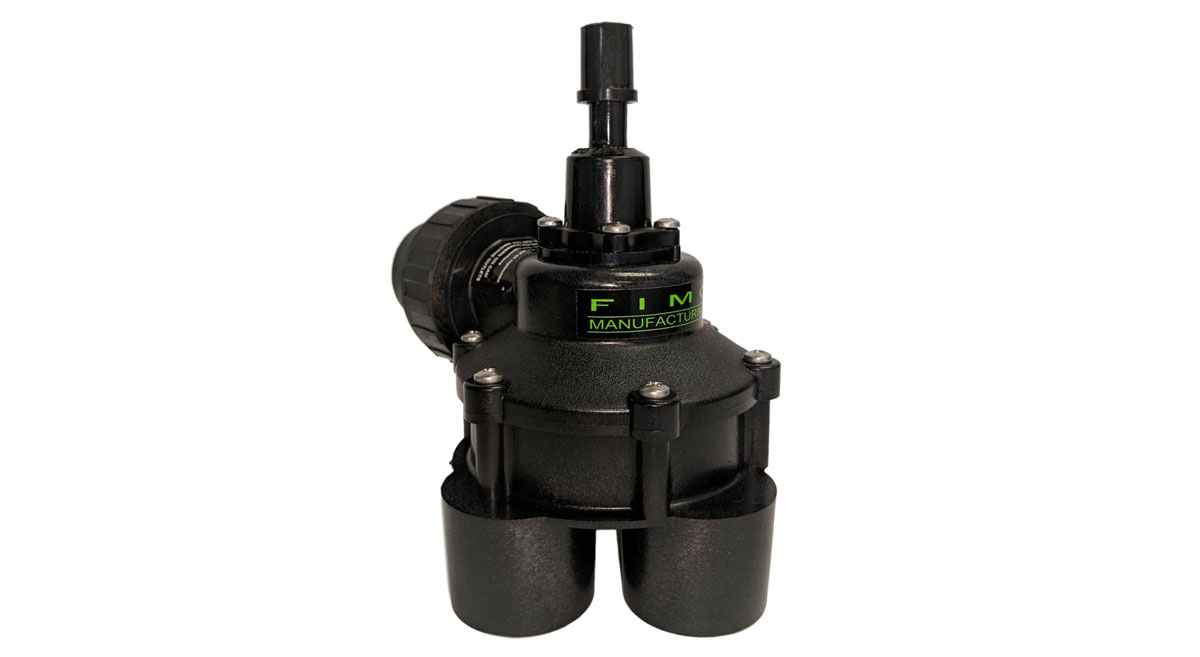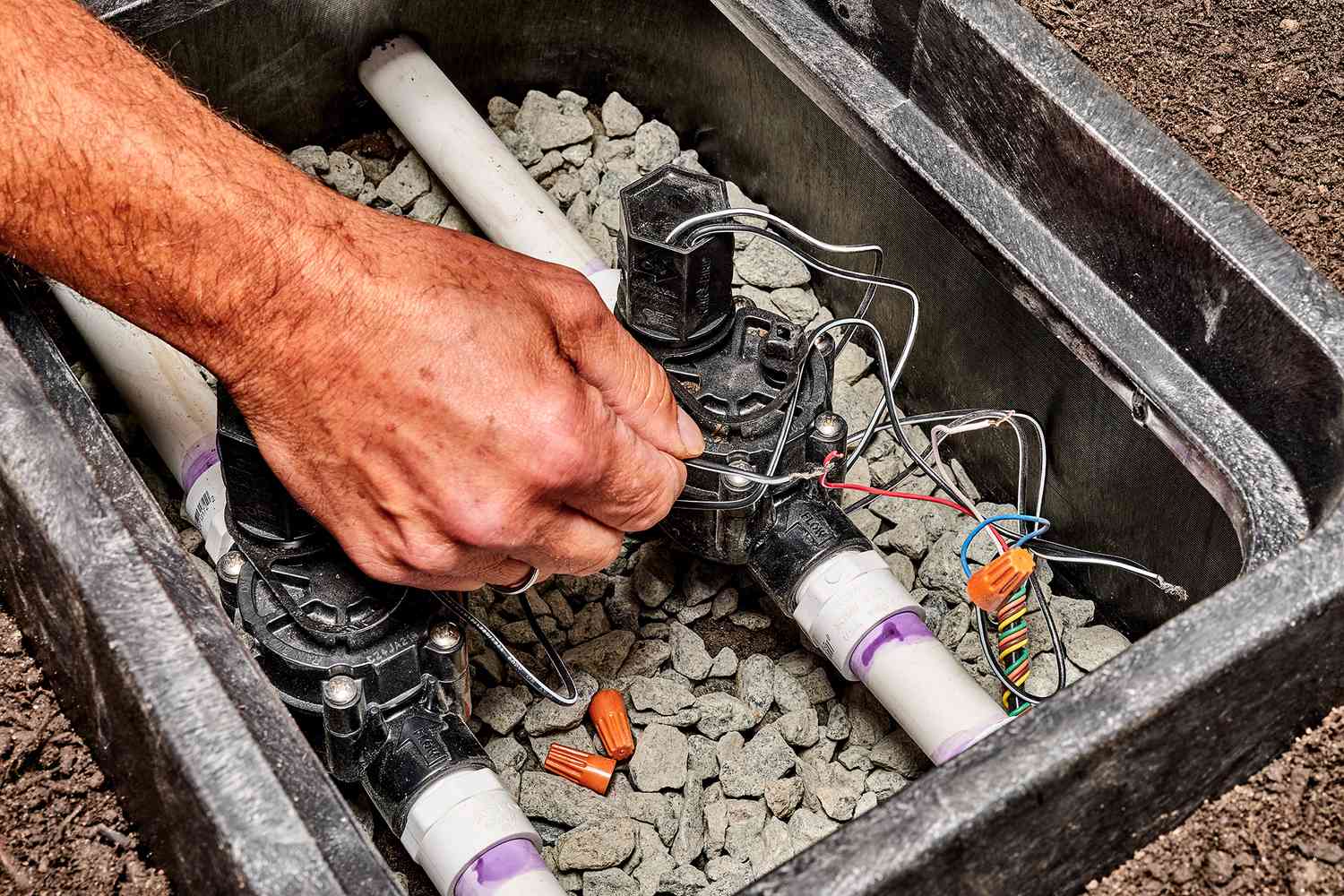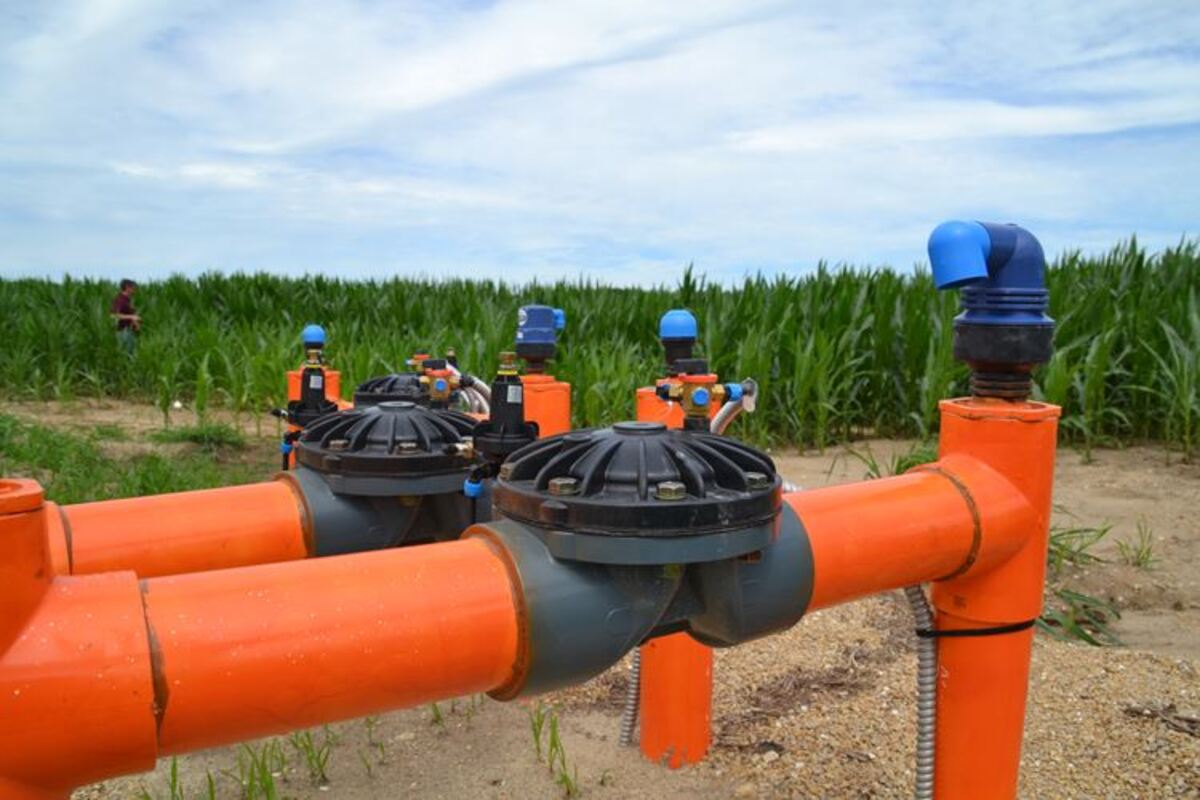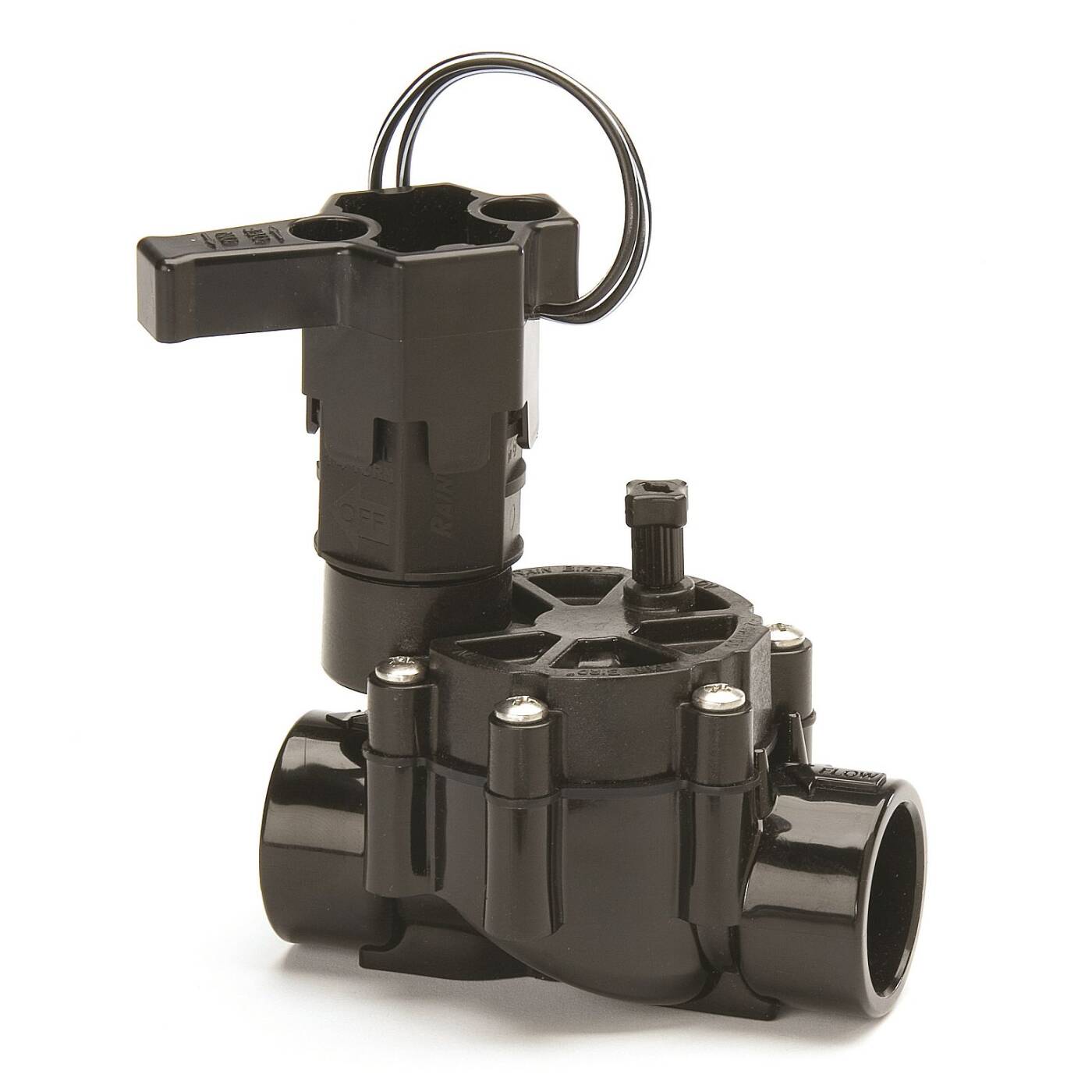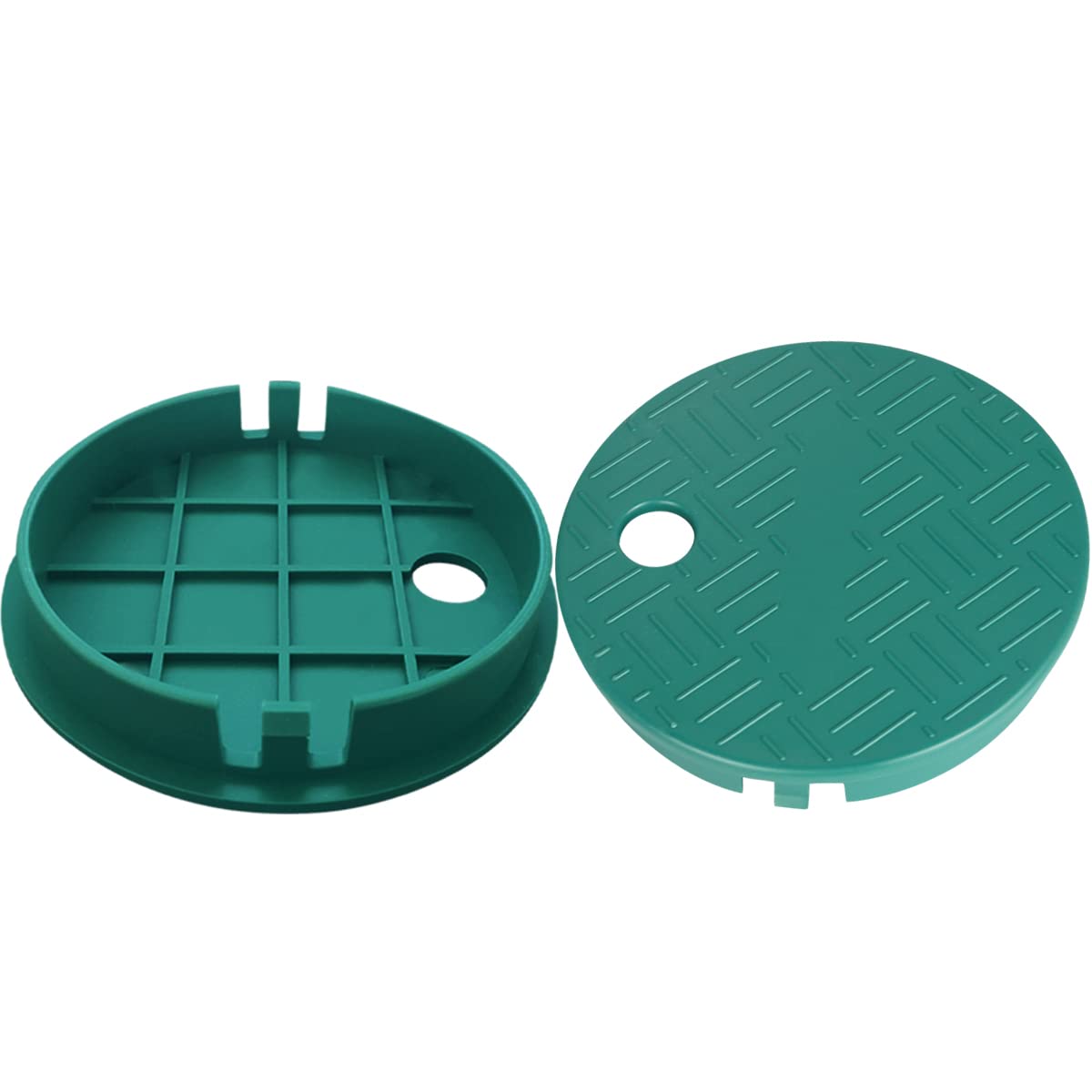Home>Gardening Tips and Tricks>Problem Solving>What Is A Irrigation Control Valve


Problem Solving
What Is A Irrigation Control Valve
Modified: January 22, 2024
Find effective solutions to your irrigation control valve problems with our expert problem-solving techniques. Don't let valve issues hinder your irrigation system's performance.
(Many of the links in this article redirect to a specific reviewed product. Your purchase of these products through affiliate links helps to generate commission for Chicagolandgardening.com, at no extra cost. Learn more)
Table of Contents
- Introduction
- Definition of Irrigation Control Valve
- Components of an Irrigation Control Valve
- Types of Irrigation Control Valves
- How Irrigation Control Valves Work
- Benefits of Using Irrigation Control Valves
- Common Issues with Irrigation Control Valves
- Troubleshooting and Maintenance of Irrigation Control Valves
- Conclusion
Introduction
Welcome to the world of irrigation control valves! If you’re a homeowner or a professional landscaper, you’ve likely encountered these devices in your quest to keep your garden green and lush. Irrigation control valves play a crucial role in managing the flow of water in an irrigation system, ensuring that each zone receives the perfect amount of water at the right time.
Whether you’re a gardening enthusiast or just starting to explore the fascinating world of irrigation systems, understanding how irrigation control valves work and their benefits can significantly enhance the efficiency and effectiveness of your watering efforts. In this article, we’ll dive into the definition of irrigation control valves, their components, types, and how they can bring numerous advantages to your landscape maintenance routine.
An irrigation control valve is a critical component of an irrigation system that regulates the flow of water to individual zones or sections of your garden. It acts as a gatekeeper, allowing or restricting the flow of water based on the specific needs of each zone. By controlling water distribution, these valves enable you to customize and optimize watering schedules according to plant types, soil conditions, and weather patterns.
The key components of an irrigation control valve include a valve body, solenoid, diaphragm, and flow control mechanism. The valve body is typically made of durable materials such as PVC or brass, and it houses the internal components responsible for controlling water flow.
The solenoid is an electromagnetic device that opens and closes the valve based on signals from the irrigation controller. It acts as the “brain” of the valve, receiving commands to release or stop the flow of water to a particular zone.
Definition of Irrigation Control Valve
An irrigation control valve is a vital component of an irrigation system that regulates the flow of water to different zones or areas within your landscape. It acts as a gatekeeper, allowing or restricting the amount of water that reaches each zone based on specific requirements. By controlling water distribution, irrigation control valves enable you to tailor watering schedules to the unique needs of your plants, optimizing their growth and minimizing water waste.
At its core, an irrigation control valve is designed to open or close, allowing or stopping the flow of water to a specific zone. This function is typically controlled electronically by an irrigation controller, which sends signals to the valve through a solenoid.
The valve body, made of durable materials like PVC or brass, houses the internal components responsible for controlling water flow. Within the valve body, you’ll find a diaphragm that serves as a barrier, preventing water from flowing through when the valve is closed. When the valve is activated, the diaphragm lifts, creating an opening that allows water to pass through and irrigate the designated area.
The solenoid, an electromagnetic device, acts as the “brain” of the irrigation control valve. When it receives signals from the irrigation controller, it either opens or closes the valve, allowing or stopping the flow of water. The solenoid is typically connected to a power source, enabling it to operate the valve as needed.
In addition to the valve body, diaphragm, and solenoid, irrigation control valves may also feature a flow control mechanism. This component allows you to adjust the amount of water flowing through the valve, giving you further control over the irrigation process. By fine-tuning the flow, you can ensure that each zone receives the appropriate amount of water, preventing overwatering or underwatering.
Overall, irrigation control valves are essential devices for maintaining a healthy and thriving landscape. They enable you to efficiently manage water distribution, reduce water consumption, and provide customized care for your plants. With the right irrigation control valves in place, you can ensure that your garden remains vibrant and well-nourished while practicing responsible water management.
Components of an Irrigation Control Valve
An irrigation control valve comprises several essential components that work together to regulate the flow of water in your irrigation system. Understanding these components will give you a better insight into how the valve functions and how you can effectively maintain and troubleshoot it.
1. Valve Body: The valve body is the main housing that encloses all the internal components of the irrigation control valve. It is typically made of durable materials such as PVC (polyvinyl chloride) or brass. The valve body provides stability and protection to the inner workings of the valve.
2. Diaphragm: The diaphragm is a flexible rubber membrane located inside the valve body. It acts as a barrier that prevents water from passing through when the valve is closed. When the valve is activated, the diaphragm lifts, creating an opening that allows water to flow through and irrigate the designated zone.
3. Solenoid: The solenoid is an electromagnetic device attached to the top of the valve body. It acts as the “brain” of the valve, receiving signals from the irrigation controller and controlling the opening and closing of the valve. When the solenoid receives an electric current, it activates a plunger that lifts the diaphragm, allowing water to flow through the valve.
4. Flow Control Mechanism: Some irrigation control valves feature a flow control mechanism. This component allows you to adjust the amount of water flowing through the valve, giving you precise control over the irrigation process. By turning the flow control knob or screw, you can increase or decrease the water flow to ensure that each zone receives the appropriate amount of water.
5. Filter Screen: A filter screen is located at the inlet of the valve body to prevent debris, such as small rocks or sand particles, from entering and potentially clogging the valve or sprinkler heads. Regular cleaning and maintenance of the filter screen is important to ensure the proper functioning of the valve.
6. Pressure Regulator (Optional): Some irrigation control valves may include a pressure regulator. This component helps regulate the water pressure within the irrigation system, ensuring that it stays within the optimal range for efficient operation. It helps prevent excessive pressure from causing damage to the valves or sprinkler heads.
These components work together to control the flow of water in your irrigation system. Understanding their functions and importance will empower you to effectively maintain and troubleshoot your irrigation control valve, ensuring that your landscape receives the right amount of water at the right time.
Types of Irrigation Control Valves
When it comes to irrigation control valves, there are several different types available, each with its own unique features and benefits. Understanding the various types can help you determine the best option for your specific irrigation needs. Let’s explore some of the most common types of irrigation control valves:
1. Globe Valve: The globe valve is the most commonly used type of irrigation control valve. It features a globe-shaped valve body with an internal water passage. When activated, the valve lifts, allowing water to flow through. Globe valves are reliable, durable, and suitable for a wide range of applications. They are commonly used in residential and commercial irrigation systems.
2. Angle Valve: Angle valves are similar to globe valves, but they have an angled body design. This makes them ideal for installations where space is limited or where the pipe connections need to be at a specific angle. Angle valves are commonly used in tight corners or areas with limited accessibility.
3. Check Valve: Check valves, also known as non-return valves, are designed to prevent water from flowing back into the main water supply. They feature a built-in mechanism that allows water to flow in one direction only. Check valves are often installed at the lowest point in an irrigation system to prevent water from draining back into the pipes when the system is turned off.
4. Anti-Siphon Valve: Anti-siphon valves are specially designed to prevent water from being drawn back into the main water supply, helping to prevent contamination. They feature a built-in backflow prevention mechanism that protects the potable water supply. Anti-siphon valves are commonly used in above-ground installations, such as sprinkler systems.
5. Electric Solenoid Valve: Electric solenoid valves are controlled electronically through an irrigation controller. They feature a solenoid that opens or closes the valve based on signals received from the controller. Electric solenoid valves offer precise control and ease of automation, allowing you to program watering schedules and customize irrigation zones.
6. Hydraulic Valve: Hydraulic valves are operated by water pressure rather than electricity. They use the water flow itself to open and close the valve. Hydraulic valves are often used in large-scale irrigation systems or areas where electricity is not easily accessible. These valves are reliable, durable, and relatively low-maintenance.
These are just a few of the many types of irrigation control valves available. Each type has its own advantages and applications. It’s important to consider factors such as the size of your irrigation system, water pressure, and specific requirements when selecting the right type of valve for your needs.
How Irrigation Control Valves Work
Irrigation control valves play a crucial role in regulating the flow of water in an irrigation system. Understanding how these valves work can help you optimize the watering process and ensure that each zone in your landscape receives the right amount of water at the right time.
When the irrigation controller signals a specific zone to be watered, it sends an electric current to the solenoid of the corresponding irrigation control valve. The solenoid, which acts as the “brain” of the valve, receives this signal and reacts accordingly.
Upon receiving the electric current, the solenoid opens a small valve inside the control valve body. This allows water to flow into the valve. The water then reaches the diaphragm, a flexible rubber membrane located inside the valve body.
When the diaphragm is in its default position, it rests on the valve seat, effectively blocking the water flow. However, when the solenoid receives the electric current, it creates a magnetic field that pulls up an iron plunger. This plunger lifts the diaphragm, creating an opening for water to flow through.
As the diaphragm lifts, water flows through the valve and into the designated zone. The amount of water that flows through is determined by the water pressure, which can be regulated using a flow control mechanism if available on the valve.
Once the irrigation controller has completed the watering cycle for that particular zone, it stops sending the electric current to the solenoid. In turn, the solenoid releases the iron plunger, allowing the diaphragm to return to its default position.
When the diaphragm touches the valve seat again, it blocks the water flow, effectively shutting off the irrigation for that specific zone. This process repeats for each zone in the irrigation system as programmed by the controller.
By controlling the opening and closing of the valve, irrigation control valves enable you to customize watering schedules. They ensure that each zone receives the appropriate amount of water, preventing overwatering or underwatering. This precision in water distribution helps promote healthy plant growth, conserves water, and minimizes wastage.
Understanding the inner workings of irrigation control valves empowers you to troubleshoot any issues that may arise and make necessary adjustments to optimize the performance and efficiency of your irrigation system.
Benefits of Using Irrigation Control Valves
Using irrigation control valves in your landscape can bring numerous benefits, both in terms of efficiency and effectiveness. Let’s explore some of the key advantages of incorporating irrigation control valves into your irrigation system:
1. Water Conservation: One of the primary benefits of using irrigation control valves is water conservation. By regulating the amount of water delivered to each zone, these valves minimize water waste. With the ability to customize watering schedules and adjust flow rates, you can ensure that your plants receive the precise amount of water they need, preventing overwatering and reducing water consumption.
2. Precision and Customization: Irrigation control valves provide precise control over water distribution. You can create specific watering schedules for different zones based on the specific needs of each plant type, soil condition, or sun exposure. Customizing your irrigation system ensures that each zone receives the optimal amount of water, promoting healthier plant growth and more efficient water usage.
3. Time-Saving: By automating the watering process, irrigation control valves save you time and effort. Once you have set up the watering schedule and programmed it into your irrigation controller, the valves take care of the rest. You no longer have to manually turn on and off the water supply for each zone, allowing you to focus on other garden tasks or enjoy your free time.
4. Increased Plant Health: Proper irrigation is vital for maintaining the health of your plants. With irrigation control valves, you can ensure consistent and appropriate watering, tailored to the specific needs of different plant zones. This promotes healthy growth, reduces the risk of overwatering-related issues such as root rot, and maximizes the overall health and beauty of your landscape.
5. Flexibility: With irrigation control valves, you have the flexibility to adjust watering schedules as needed. You can easily modify the frequency and duration of watering to adapt to changing weather patterns, seasonal variations, or the individual requirements of different plant species. This flexibility allows you to provide optimal care for your landscape throughout the year.
6. Cost Savings: Efficient water usage directly translates to cost savings. By carefully controlling water distribution, irrigation control valves minimize water waste, which in turn reduces your water bill. Additionally, healthier plants are more resistant to diseases and pests, reducing the need for costly interventions and maintenance.
Integrating irrigation control valves into your irrigation system offers numerous benefits, from conservation and customization to time-saving convenience and cost savings. These valves provide an essential tool for efficient, effective, and sustainable landscape maintenance.
Common Issues with Irrigation Control Valves
Like any mechanical device, irrigation control valves can experience issues from time to time. Understanding the common problems that may arise with these valves can help you identify and address them promptly, ensuring the proper functioning of your irrigation system. Here are some of the most common issues with irrigation control valves:
1. Valve Continuously Running: One common issue is when the valve fails to close completely, causing water to continuously run. This can be due to a faulty diaphragm or debris obstructing the valve’s closing mechanism. Regular cleaning and inspection of the valve can help prevent this problem.
2. Valve Not Opening: On the other hand, you may encounter a situation where the valve fails to open and no water flows through. This could be caused by a defective solenoid or a blockage in the water supply line. Inspecting the solenoid and ensuring proper water flow can help troubleshoot this issue.
3. Low Water Pressure: If you notice weak water flow or reduced water pressure in your irrigation system, it may be attributed to a problem with the valve. This can be due to a partially closed valve, a clogged filter screen, or a water line obstruction. Checking these elements and addressing any blockages can help restore adequate water pressure.
4. Valve Leaks: Leakage around the valve is another common issue that can result in water wastage and potential damage. Leaks can occur due to worn-out gaskets, damaged diaphragms, or loose valve connections. In such cases, replacing the faulty components or tightening the connections can resolve the problem.
5. Solenoid Issues: The solenoid, being the control center of the valve, can experience malfunctions. This can manifest in sporadic valve operation or failure to respond to signals from the irrigation controller. Inspecting the solenoid, ensuring proper electrical connections, and replacing it if necessary can help resolve solenoid-related issues.
6. Electrical Problems: Sometimes, electrical issues can affect the functioning of irrigation control valves. This can include faulty wiring, damaged connectors, or problems with the irrigation controller itself. Checking the electrical connections, replacing damaged components, or consulting a professional electrician can help address these problems.
Regular maintenance, including cleaning and inspection of the irrigation control valves, can help prevent these issues from occurring. Additionally, promptly addressing any problems that do arise can help ensure the efficient and effective operation of your irrigation system.
Troubleshooting and Maintenance of Irrigation Control Valves
Troubleshooting and regular maintenance are essential to keep your irrigation control valves operating at their best. By addressing minor issues and performing routine upkeep, you can prolong the lifespan of your valves and ensure the optimal performance of your irrigation system. Here are some troubleshooting and maintenance tips to help you keep your irrigation control valves in top shape:
1. Check for Leaks: Periodically inspect your irrigation control valves for any signs of leakage. Look for water puddles or damp areas around the valves. If you notice leaks, check the valve connections, gaskets, and diaphragm for any damage or wear. Tighten loose connectors, replace worn-out gaskets, or repair/replace damaged diaphragms as needed.
2. Clean Filter Screens: Filter screens are designed to prevent debris from entering the valves and causing blockages. Regularly cleaning the filter screens helps maintain proper water flow and prevents clogging. Remove the screens and rinse them with water to remove any accumulated dirt or debris.
3. Inspect and Clean Solenoids: The solenoids play a critical role in opening and closing the valves. Periodically inspect the solenoids for any signs of damage or wear. Ensure they are securely attached to the valve bodies and that the wiring connections are intact. If you notice any issues, consider replacing the solenoids or consulting a professional.
4. Test the Valve Operation: Regularly test the opening and closing operation of the irrigation control valves. Activate each zone individually from the irrigation controller and observe the valve’s response. Make sure they open fully and close completely without any issues. If a valve fails to operate correctly, consider cleaning, repairing, or replacing the components causing the problem.
5. Adjust Flow Rates: If you notice any zones receiving too much or too little water, you may need to adjust the flow rates. Use the flow control mechanism, if available on your irrigation control valves, to fine-tune the water flow for each zone. This helps ensure that each area of your landscape receives the appropriate amount of water.
6. Winterization: Before cold weather sets in, it’s important to winterize your irrigation system, including the irrigation control valves. Turn off the water supply, open the valves to release any remaining water, and drain the pipes to prevent freezing and potential damage. Consult a professional if you’re unsure about the winterization process.
Regular maintenance and troubleshooting of your irrigation control valves will help you identify and address issues promptly, ensuring the efficient and reliable operation of your irrigation system. By keeping your valves in good condition, you can enjoy a healthy and beautiful landscape while conserving water and improving overall system sustainability.
Conclusion
Irrigation control valves are essential components of any irrigation system, allowing you to regulate water flow and customize watering schedules for optimal plant health and water conservation. Understanding the different types of valves available, as well as their components and how they work, is key to effectively managing your landscape’s irrigation needs.
By incorporating irrigation control valves into your irrigation system, you can benefit from enhanced water efficiency, precise watering schedules, time-saving automation, and cost savings. These valves provide the flexibility to adjust watering patterns based on varying plant requirements, weather conditions, and seasonal changes.
However, like any mechanical device, irrigation control valves may experience common issues such as leaks, malfunctions, or low water pressure. Troubleshooting these issues and conducting regular maintenance can help you address them promptly, ensuring the proper functioning and longevity of your irrigation system.
From inspecting and cleaning solenoids and filter screens to adjusting flow rates and conducting winterization, regular maintenance of your irrigation control valves is essential. This proactive approach can help prevent potential problems and ensure that your irrigation system operates at its best.
In conclusion, incorporating irrigation control valves into your irrigation system offers numerous benefits, including water conservation, precise watering capabilities, time savings, and cost savings. By understanding how these valves work, identifying and addressing common issues, and performing regular maintenance, you can maximize the efficiency and effectiveness of your irrigation system, leading to healthier plants, a thriving landscape, and responsible water usage.

